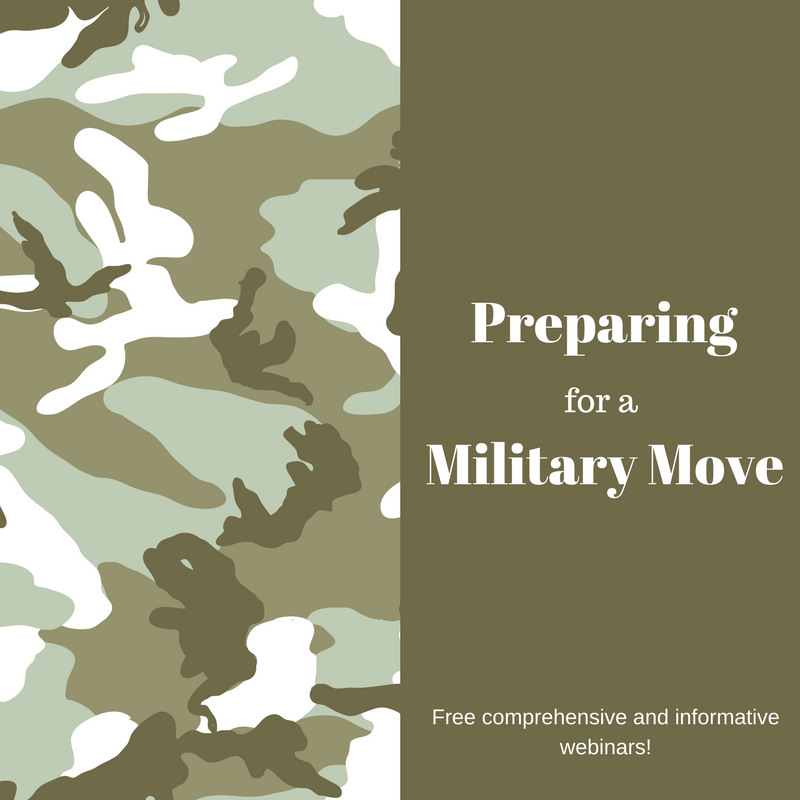Preparing for a military move is a critical part of military life, and it is essential that a service member start planning as soon as possible. The first step is making a list of everything you will need and taking an inventory of your belongings. You may have to wait for your things to arrive, especially during PCS season. If this is the case, bring only the essentials with you and make sure to keep family and friends informed throughout the move.
Getting a military loan
While preparing for a military move can be expensive, there are a few ways to make it easier on yourself financially. First, make sure that your current household accounts are in order. You’ll also need to have a comprehensive budget. You’ll also need to figure out how much cash you’ll need to buy new furniture, utilities, and other items. While military policies cover certain expenses, you may need to purchase additional insurance to protect your belongings. In addition, military relocations often involve a change of address.
In addition to the DOD’s own allowances for moving and housing, the government will reimburse you for tolls and mileage expenses. You’ll also get a moving weight allowance based on your rank. Before you move, make sure to find out what your allowance is.
Another way to save money on military relocation is to get pre-approved for a home loan. This will give you a clearer idea of your purchasing power, and show the seller that you’re serious about buying a home. A lender will also require documentation that proves your income and military service. Make sure to ask questions about what documentation is needed.
If you’re planning to move overseas, you’ll likely need money for moving expenses. While PCS moves are already stressful, an overseas move is even more complicated and unpredictable. You may be moving every two or three years, or even more often. In any case, military relocations are never free. You’ll have to pay for many of the costs upfront, before your DLA starts paying for them.
If you’re planning a military move, you might qualify for special loan options. For instance, you can qualify for a VA loan, which doesn’t require any down payment, and doesn’t require private mortgage insurance. Your closing costs can even be covered by the seller, if you don’t have enough money to cover them. The good news is that a VA loan is much more forgiving than a traditional mortgage.
Your military move can be costly, but the good news is that Uncle Sam covers most of it. You can ask your base finance and transportation resources for help with your expenses. The Military’s Transportation Management Office will help you with all of the details. A military move is an exciting and challenging time for a military member, and you should plan accordingly.
Getting a sponsor
If you’re planning a military relocation, you need to find a sponsor. A sponsor can help you with your relocation by providing you with important information about the new location. This person may offer tours of the area or answer your questions about it. It’s important to get your sponsor’s contact information in advance so that you can communicate freely.
Sponsors are military members who are trained to help incoming families settle in to their new base. They can answer questions about schools and housing, arrange rental cars, and pick up your family from the airport. They can even help you find temporary housing and furniture. These sponsors also have insider knowledge about the new installation, which can help you get settled in quickly and efficiently.
To become a sponsor, service members can take eSponsorship application training. eSAT provides training and resources to help new Sponsors be effective. This training is mandatory for those who are assigned sponsorship responsibilities. Once a sponsor has completed the eSAT training, he or she will be able to access the military’s eSponsorship website.
Finding a sponsor is crucial for a military member’s relocation, as it is essential to have someone familiar with the area. Oftentimes, sponsors are able to help their new military partner with housing, transportation, and even household loan lockers, which provide basic household supplies and small appliances. The sponsor can also provide helpful tips regarding local culture, currency exchange, and driving.
A sponsor can help military families prepare for a military PCS. The sponsor can also help military families make the right transition and connect information about school registration. Sponsors are usually active military members. In addition, they can connect the family with other important details that can help them adjust.
While you’re preparing for a military relocation, it can be stressful. Start planning early! There are a number of websites and resources to help you prepare for the move. Each branch of the armed services has a Family Service Center and Relocation Assistance Program Manager to assist you with preparing.
Getting ready for a military move
Before a military move, it’s important to know the rules of PCS, or permanent change of station. This type of move means spending at least 20 weeks at a new duty station. If you’re only going to be there for a month or two, you can also apply for a partial household move. There are also international moves, which involve sea transportation.
As soon as you know you’ll be moving, start making lists and making inventories of your possessions. It’s a good idea to get moving estimates from as many moving companies as possible. Buy packing materials and begin packing as early as possible. Don’t forget to communicate with family and friends about the process.
PCS-specific checklists can help you stay on track with your PCS and reduce the stress that comes with it. A checklist will help you prepare for any details that will come up during your military move, and it will help you plan ahead. You’ll need to know where you’re going, what your military will provide for living expenses, and how long you’ll be gone. You’ll also need to know the Basic Allowance for Housing in your new location. Once you know this, you’ll be able to determine how much it will cost you to live in your new city or town.
Before a military move, your family should research housing options. Doing so will help you make decisions about where you want to live. There are websites dedicated to military families, and you can also find area guides to military duty stations nationwide. With the right resources, moving can be a breeze.
When it comes to packing your belongings, military movers prefer to pack everything for you. They’re government-contracting companies that pack your items. However, you should make sure to wrap fragile or sentimental items. You can also ask someone to take in your incoming mail. Military movers are familiar with the special requirements of military relocations, and will be able to handle your shipments and reimburse you at the end of the move.
Once you have determined your PCS order, the next step is getting all the necessary paperwork in order. This is essential as it’ll save you money on moving costs. The government will reimburse you for the costs of moving, but it comes with certain restrictions. You can also apply for a partially reimbursed move, which will reimburse you a portion of your expenses. Your military and family support center will be able to help you with this important step.
Getting pro gear
If you’re moving to another country with your military partner, you should start by checking with the Defense Travel Management Office for details on your Dislocation Allowance. You can also check to see what allowances you will receive for your spouse’s Pro-Gear. In some cases, spouses can receive up to 2,000 pounds of pro gear. However, you should be aware that the allowances are limited to the items that your spouse needs for his or her job.
You can also get a Pro-Gear allowance if your spouse is in the military and works for the community. While computers are no longer considered pro-gear, other items, like uniforms and books, may be. If you’re a volunteer in your community, you can also get a weight deduction for your uniform.
Military members often need to move extra equipment and uniforms, including professional materials. The good news is that their “pro-gear” does not count against the overall weight allowance and is annotated separately. As long as the equipment is necessary for your job, you can get a military moving company to ship it for you.
If you are a military spouse, you can take up to 500 pounds of pro-gear with you. However, you must be sure that the pro-gear you bring with you will fit within the parameters outlined in the military’s rules. In addition to moving pro-gear, your spouse can also take along furniture that is associated with your profession.
The military has a weight limit for pro-gear, which used to be 3,000 pounds. Since it doesn’t count against the household goods weight allowance, the military has now lowered it to 500 pounds for the member and his/her spouse. This means that you should pack your pro-gear separately and pack it into boxes, and weigh each box separately. Remember to write down the actual weight of each box. It is also important to make sure that your pro-gear is labeled correctly.





